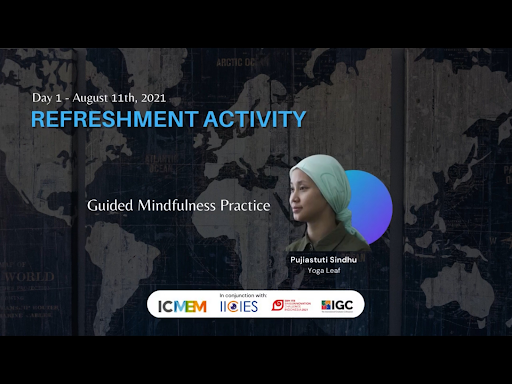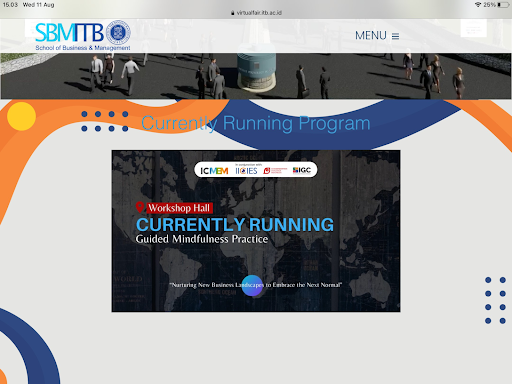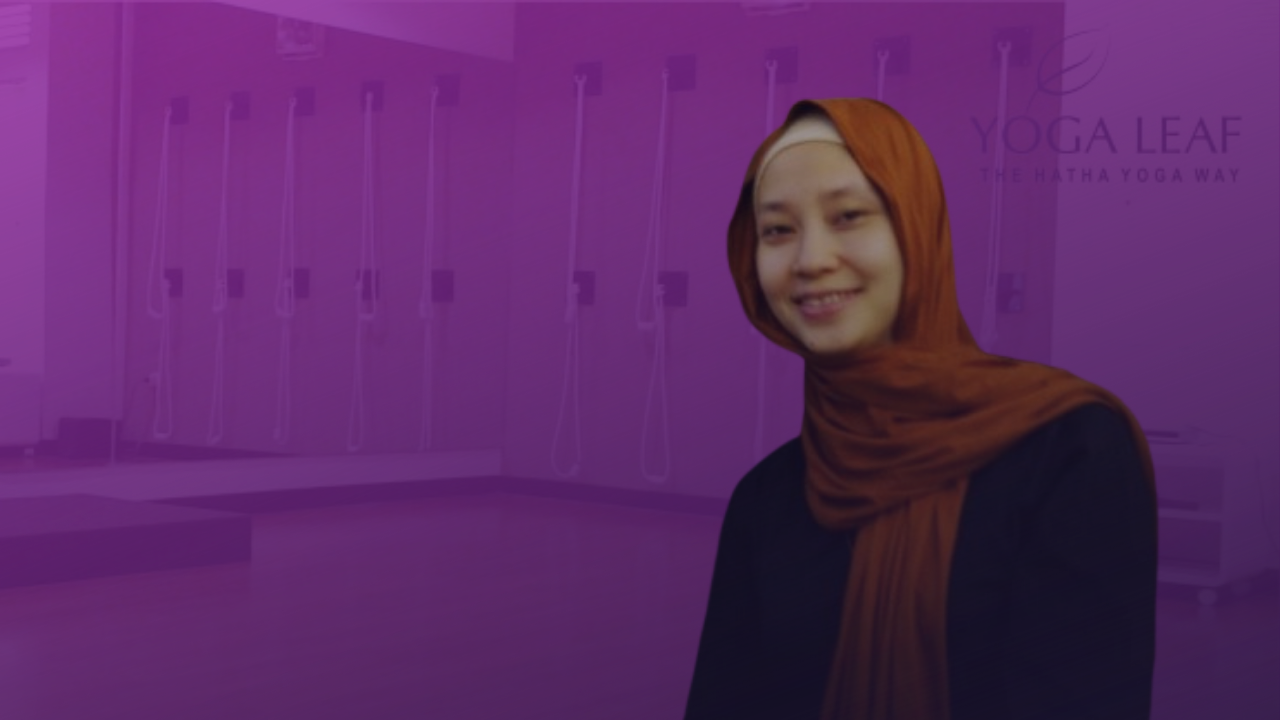“Mindfulness is my superpower, and it can be yours too,” said Pudjiastuti Sindhu, Founder, and Director of Yoga Leaf Indonesia, on the ICMEM 2021 Refreshment Activity: Guided Mindfulness Practice. Pudji believes many experience panic attacks, especially in a pandemic. Thus, Pudji, one of the pioneers of the Yoga community in Indonesia since 2002, has shared her experience and knowledge of mindfulness practice based on the Yoga meditation approach. Pudji, based on her experience practicing mindfulness through meditation, believes that mindfulness is closely related to meditation. So, what is mindfulness, and how to practice it?

Having been practiced for thousands of years by spiritual schools in the world such as Taoism, Hinduism, and Bushism, and of course Yoga, mindfulness means paying attention to something with care and the right attitude (mindful attitude), one thing at a time. In this modern world, we know some mindfulness master, such as a Vietnamese Monk and spiritual master, and professor of biology in America that has developed non-religious and secular mindfulness.
Seven Pillars of Mindfulness
In its practice, mindfulness has seven pillars to be practiced, which are:
- Non-judgment, to not judging anything that happens during the session;
- Beginner’s mind, to keep yourself curious and enthusiastic just like a child who experience it at the first time;
- Patience, to understand that we can’t rush things, we can’t control things. We can only keep on practicing;
- Non-striving, to be here and now (at present) without seeking things to be different or desiring to be somewhere else;
- Trust and Patience, to have intuition, process, and trust thing will be fine in its own time;
- Acceptance, to have the openness of the heart and ability to accept a situation in life, even those who have given bad memories; and
- Surrender
Again, mindfulness is not merely giving attention but giving full quality of attention.

Why do we need it?
We need mindfulness simply because we want to live a quality life that is happy, healthy, and peaceful.
In the Yoga system supported by science, emotional and mental state affects our body, vice versa. If we are stressed, it not only overwhelms our minds but leads to physical problems. When our mind is busy with conversation in our head, it overwhelms our minds, leading to our body reacting, tensing the muscle just as we are ready to face war. On the other hand, when we do mindfulness, we step back to focus on what is happening right now, to reverse symptoms of stress by releasing happy hormones and restoring the body system to balance in harmony.
Based on Puji’s personal experience, Puji often shifts her anxiety to her breath when meditating, to her body when doing yoga, or to shift her attention to dishwashing or to do the chores.
How can we practice mindfulness?
We can practice mindfulness techniques through our five senses and their abilities, such as seeing, sensing, etc., which we can use as a medium to focus on something. In Yoga practice, we mostly use the sense of touch through breathing techniques, while in meditation, we must have a focal point as an object of focus in the form of sound (mantra, heartbeat, breath).
How can we practice mindfulness while the kids are screaming, etc., as everyone is at home now?
Mindfulness is about stopping and stepping back to focus on one thing that we can access through one of five senses. So, we can practice mindfulness through our favorite things: if we like music, pay attention to it with care; if we like aromatherapy, we smell in it with care.
As a practical practice, Pudji has some ways for us to do mindfulness:
Yawning techniques
- Stretch our arms out
- Take a deep breath in
- Give a big yawn
Yawing is a good reset for our body and mind since it brings oxygen to our mind and body.
Breathing exercise
- Raise your hand to the ribs
- Close your eyes
- Start to breathe with deep inhale and exhale
- Concentrate on your rib movement as you breathe (feel how our ribs inflate and deflate during the breathing process)
- Release
Breathing is a special technique in yoga to bring up mindfulness. Our breath is the bridge between our body and mind, to energize or to calm. Checking our breath helps us stay in the present, as they will be with us all the time (as we breathe all the time).
- Raise our non-dominant hand
- With our dominant hand, place it to the outrage of our thumb
- Slowly trace our finger by paying attention and watching closely
- When we trace up, we inhale. At the top, we hold our breath. We exhale when we are tracing down
High five methods
- Rub our hands until it feels warm
- Clap our hands a few times
- Release to feel the sensation from both hands and see if you can zoom your focus to one small part
We need something to focus. When we create a sensation, it gives us something to focus. In yoga, we focus on the sensation in our body when we stretch and breathe.




